Château La Roche Guyon
Château La Roche Guyon
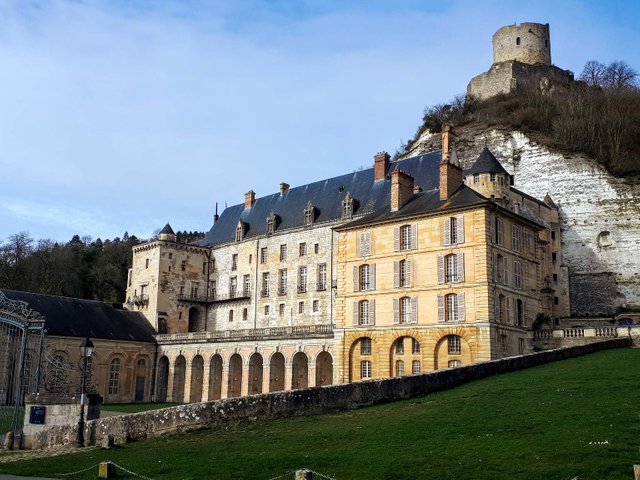
In the small village of La Roche Guyon along the banks of the Seine River is a castle that has literally been carved into the limestone cliffs in which it rest.
On the hilltop above are the ruins of a medieval keep where a 38 meter tall donjon tower once stood. The keep is partially in ruins having been destroyed in 1793 during the French Revolution to prevent its use by counter revolutionaries. As was common around that time period, many of the stones of the keep were repurposed for other buildings in the surrounding area.
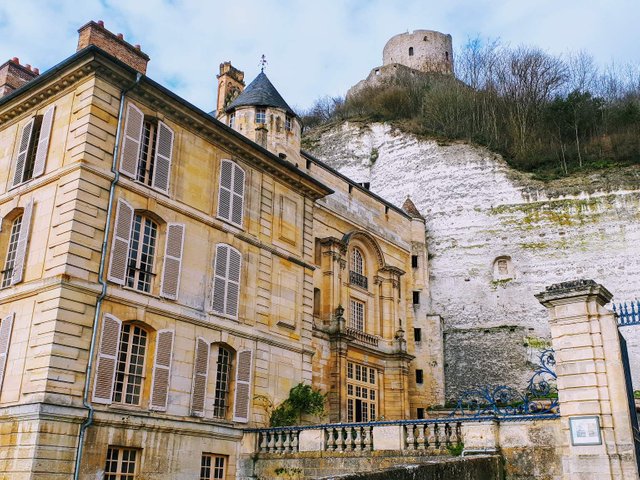
Up a paved laneway and through and iron gate brings you to the main entrance of the castle and surrounding courtyard.
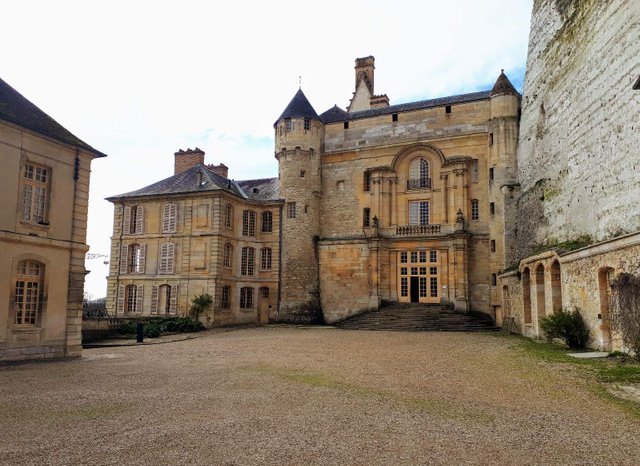
The courtyard is protected on one side by the naturally preserved cliff face. During the tour of the castle you actually walk through many areas that were carved into the rock face many centuries ago.
Brief History of the Castle
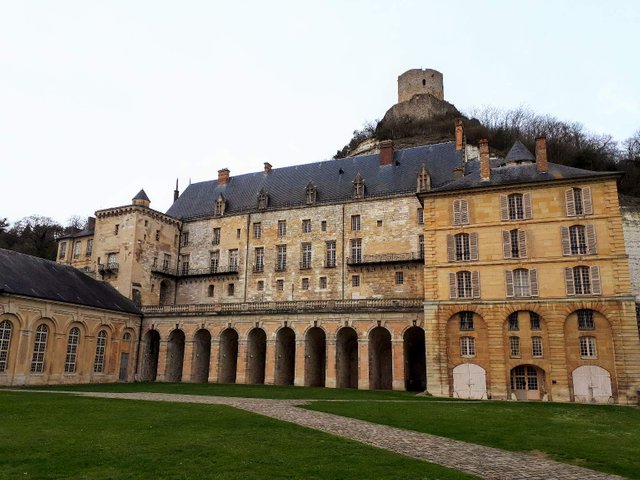
Sometime around the year 1144 a basic troglodyte castle was built into the cliffs in this location in order to defend the Ile de France territory from invaders coming down the Seine River. The word "troglodyte" means cave dwelling (or person who lives in a cave dwelling).
La Roche Guyon and the surrounding area has many troglodyte dwellings that are still in use by French home owners even to this day. Many of them are in their backyards and have been converted to workshops, sheds and garages.
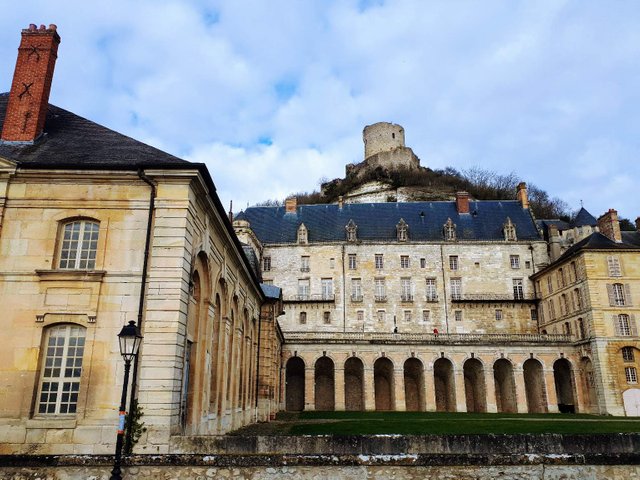
Later in the 13th century a mansion style home was built overtop (or I suppose in front of) the original troglodyte castle. Later a stable was also added to the property which is the long stretch of building to the left in the photograph above.
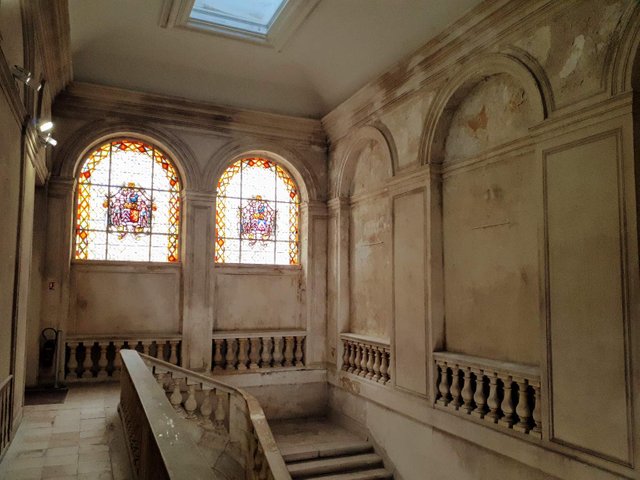
Starting in the foyer you can head up the large staircase and meander your way through the rooms and hallways of the castle. Unfortunately, most of the rooms are empty though so there isn't actually a whole lot to see in them.
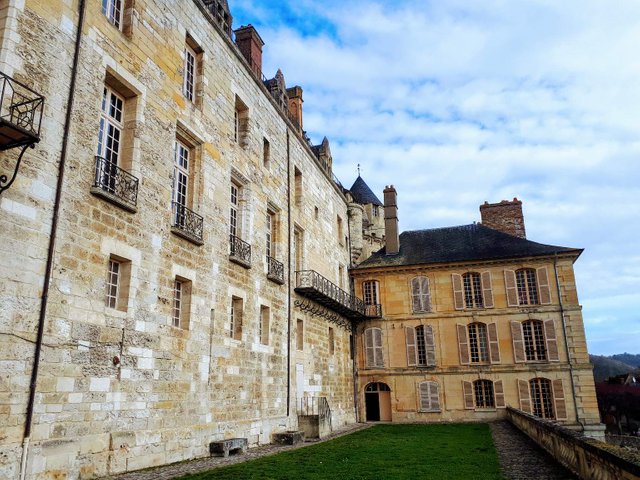
However, you can head back outside onto the terrace. Here you can see a spectacular view overlooking the stables, fruit and vegetable garden and Seine River. I can only image how nice it would be to come back and see it in the spring when all the trees and flowers are in bloom.
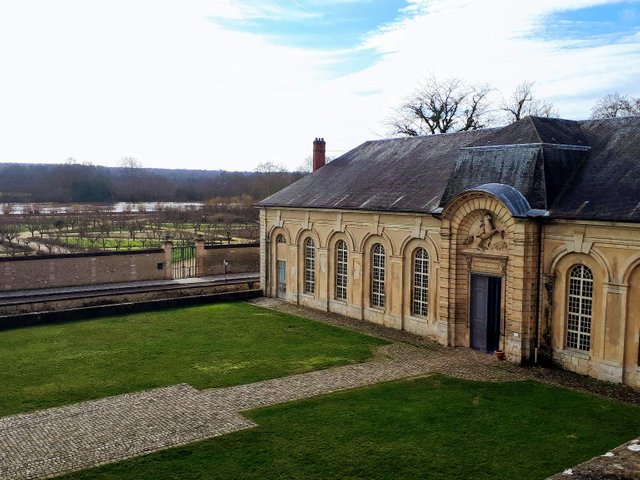
Back inside the castle is a small church and a large theater in the basement that is currently being restored to all its grandeur. We weren't able to see it though.
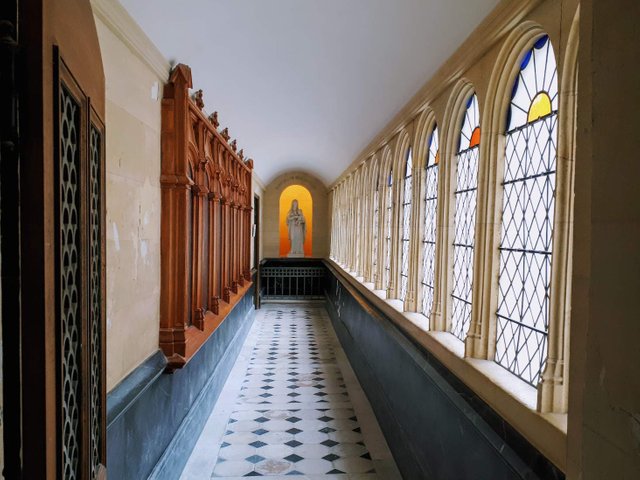
After viewing a library filled with fake books and a small room lined with some amazingly beautiful hand painted Chinese wallpaper (which I regrettably did not take a picture of) you can head back outside to a small rear courtyard where the house dogs were once kept.
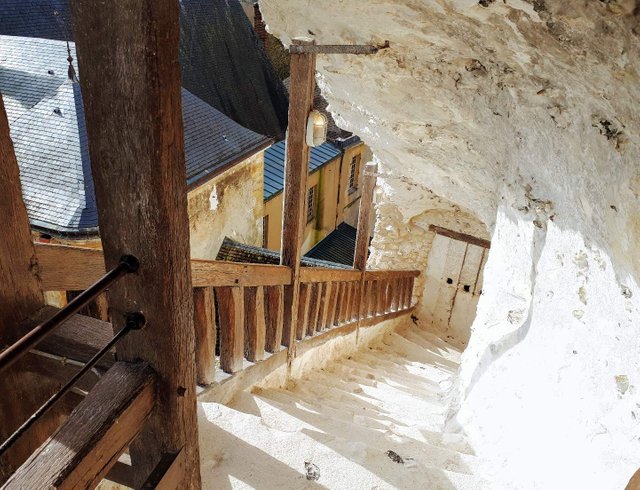
From here you follow a set of stairs leading up to a pigeonry and the defensive tower. The staircase was carved into the limestone rock at the end of the 12th century.
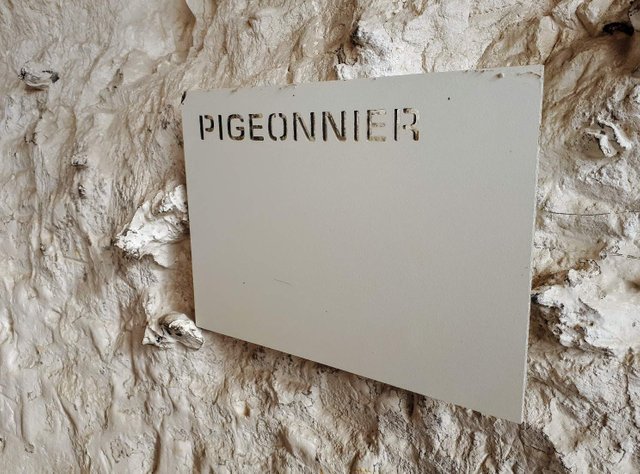
I read that over 1000 pigeon holes were carved into the cliff in this location. They lined all three sides of the room as well as the stairwell walls. My wife and I originally thought that the pigeons were used to send messages across the land or perhaps as a source of food. However, a sign in the room informed us that their purpose was to fertilize the food gardens. Apparently pigeon excrement makes a good fertilizer. Who knew?

The pigeonry overlooks the small village of La Roche Guyon and the river. It was a pretty unique and beautiful spot overall. I had never seen anything like it before.

Another staircase carved into the rock brings you to the old donjon and keep on the mountain above. It was closed during our visit though so we didn't get to climb the dark staircase to the top. I was quite disappointed to be honest.
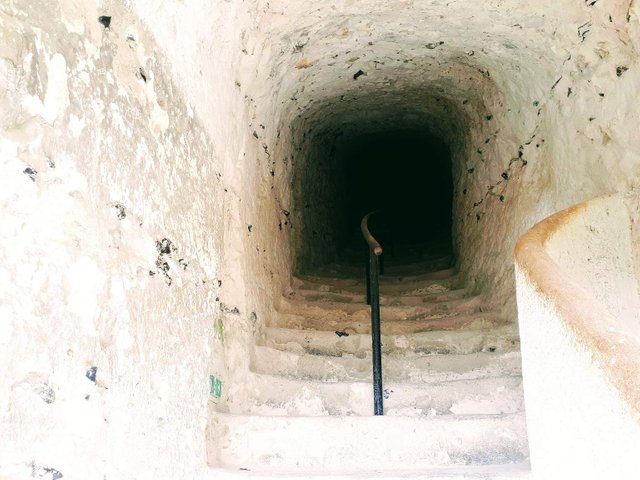
In 1944 the castle was occupied by German soldiers. At that time, the "casemates" hall was built into the cliff to store ammunition for the war effort. At its entrance is a large concrete wall constructed in the middle of the walking path. It is several feet thick and was built to protect soldiers occupying the space during a bombing attack.
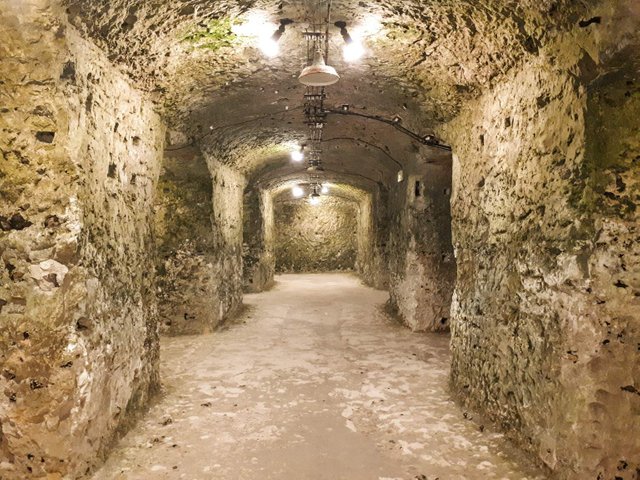
Interestingly, while the castle was occupied by the military the Rochefoucauld family, then owners of the building, continued to live on the premises in the upper apartments. Quite an interesting arrangement in my opinion.
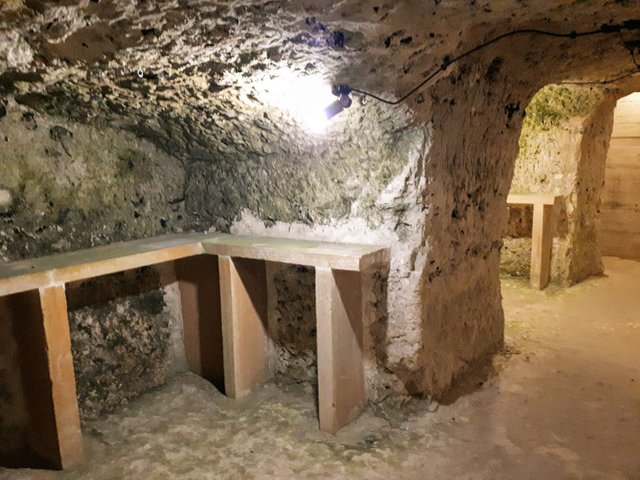
Below the casemates are several large compartments called "Boves" which were also used to store ammunitions. They are separated by thick walls and and armoured doors. The floors are sand and dirt and the room remains quite dark and somewhat eerie.
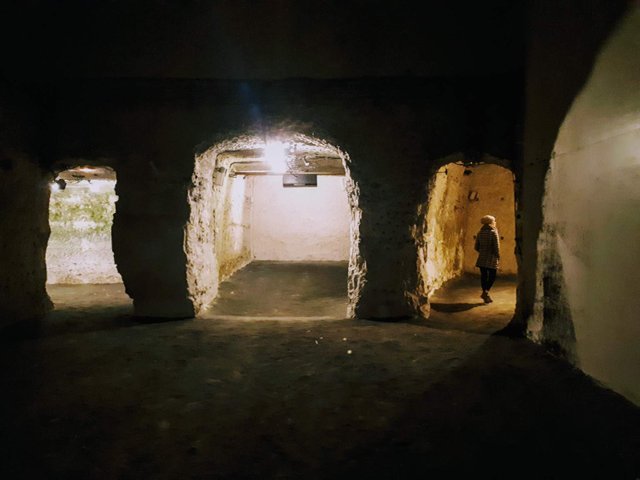
In August 1944, after the German military evacuated the area, the castle and surrounding city were bombed by the allies and many areas of the castle were destroyed. Restoration efforts have continued on the castle ever since.
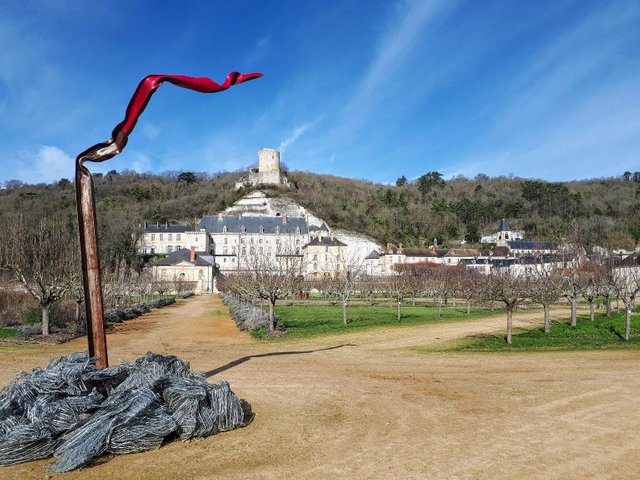
Across the street from the castle is a large fruit and vegetable garden that was restored in 2004 to it's original 1741 plans. Its purpose is for horticultural experimentation and sustainable environmental practices. The use of pesticides in the space is prohibited.
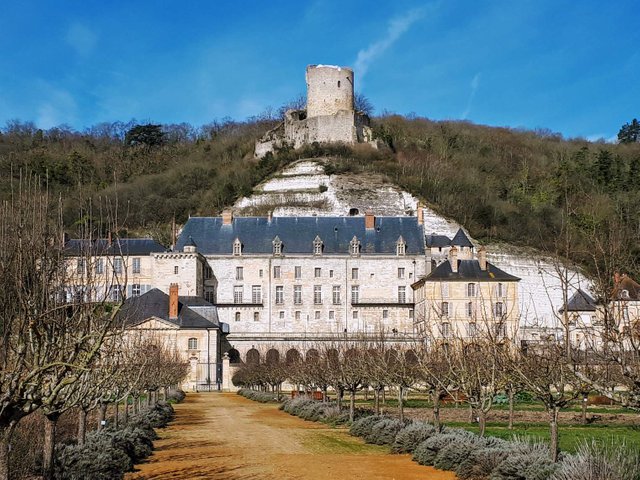
Being that its February, there wasn't much to see in the garden but I image that it is quite beautiful in the spring and summer when all the fresh produce is ready for harvest.
The view along the banks of the Seine was still quite enjoyable though.
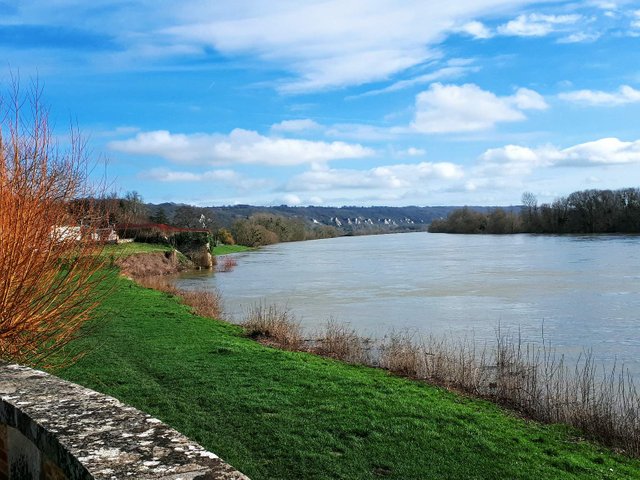
Thanks for Reading
Posted using Partiko Android
Very enjoyable piece of posting, especially the photos. Time for another trip down the Seine. It's been a while. À bientôt!
Nice job leaky20, That's quite the place and you showed it well with your photo's. Looks like an incredible amount of work went into building that complex. Wow. Excellent photo's.
Thanks. I'm glad you like them :)
Posted using Partiko Android
Congratulations @leaky20! Your post made the TravelFeed team happy so we have sent you our big smile. Keep up the good job. 😃
Feedback
Based on your post, we have the following feedback for you:
Thanks for using TravelFeed!
@smeralda (TravelFeed team)
PS: Have you joined our Discord yet? This is where over 1000 members of the TravelFeed come together to chat. Join us!
According to the Bible, Can the word "god" be applied to other entities?
(Sorry for sending this comment. We are not looking for our self profit, our intentions is to preach the words of God in any means possible.)
Comment what you understand of our Youtube Video to receive our full votes. We have 30,000 #SteemPower. It's our little way to Thank you, our beloved friend.
Check our Discord Chat
Join our Official Community: https://beta.steemit.com/trending/hive-182074